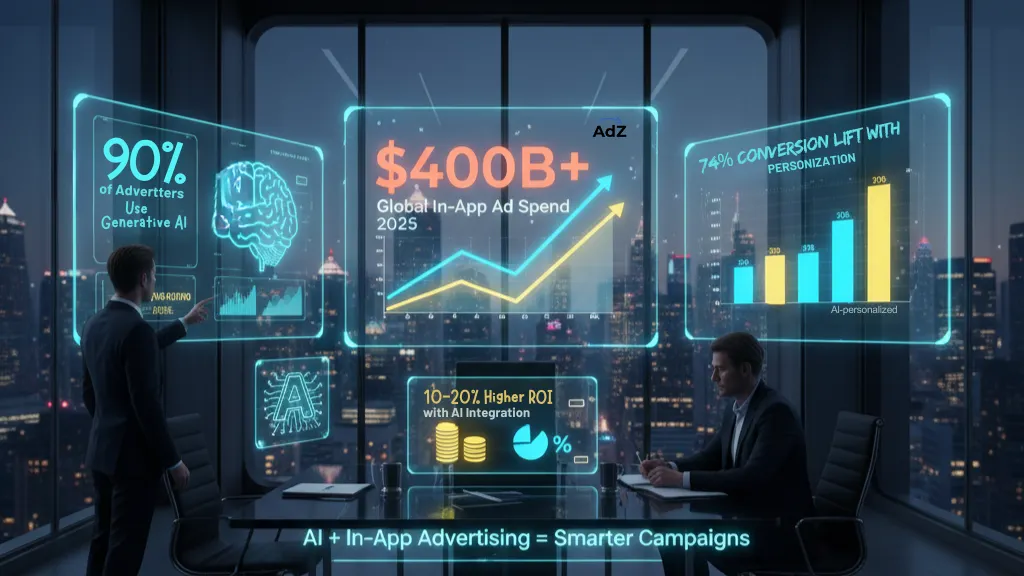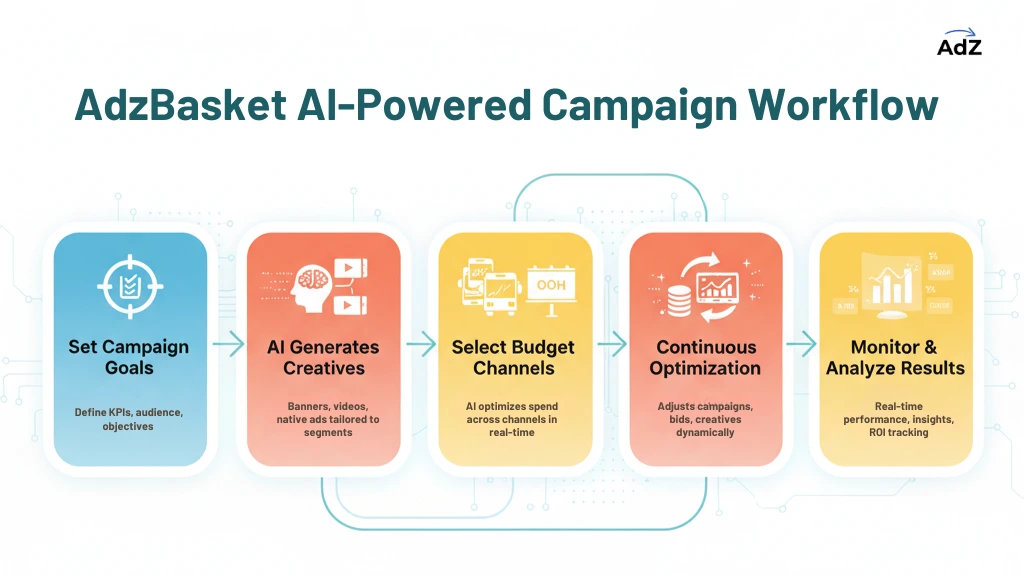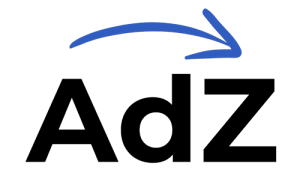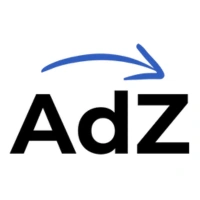In the rapidly evolving digital landscape of 2025, in-app advertising has crossed a threshold: it’s no longer just buying impressions, but building intelligent, AI-driven experiences. For brands willing to adapt, this means more precision, better ROI, and audience engagement that feels natural rather than intrusive. In this article, we take a deep dive into key in-app advertising trends, how Brand Tech AI platform solutions are reshaping campaign strategies, and how advertising using AI platform tools like AdzBasket are empowering marketers.
Why In-App Advertising Still Matters
- Mobile usage continues to dominate: people spend more time in apps than ever before, particularly in emerging markets.
- The complementarity between paid and organic installs shows that paid in-app ads help boost organic growth as well. A recent academic study observed that every $100 spent on in-app ads leads to more paid installs and additional organic installs over time, thanks to spillover effects.
- With increasing privacy regulations (e.g. Apple’s ATT, GDPR etc.), in-app environments allow for more controlled targeting using first-party data and consented user behaviour.
Top Trends Shaping In-App Advertising in 2025
Here are the biggest currents moving the in-app ad space this year:
Generative AI & Creative Automation
- Brands are using generative AI to build creatives (images, video, banner/content) faster, dynamically adapting content for different user segments.
- Nearly 90% of advertisers are now using or planning to use GenAI for video ad creation; by 2026, it’s expected to account for ~40% of all video ads.
- Creative testing is increasingly automated: multiple variants of an ad are auto-generated, tested, and optimized based on performance.

Hyper-Personalization & Predictive Targeting
- AI and machine learning are being used to analyze behavioural, contextual, and real-time data inside apps to deliver ads personalized to the moment (e.g. time of day, location, in-app behaviour).
- Data shows marketers using AI for segmentation saw conversion rate improvements (for example, “74% of marketers using AI for segmentation saw better conversions”).
- Predictive analytics isn’t just a buzzword: it’s being used for predicting churn, lifetime value, likely purchases etc., which then determines budget allocation.
Privacy, Consent & First-Party Data
- With global privacy standards tightening, reliance on third-party cookies is fading. Brands are investing in first-party data collection (via app permissions, usage data, engagement) and contextual targeting.
- Transparency is becoming core: users expect to know why they see certain ads, and platforms are expected to comply with data usage norms.
Cross-Channel & Unified Campaign Management
- Brands don’t run in-app campaigns in isolation — in 2025 they are integrating in-app with OOH (Out-Of-Home), DOOH, transit, etc., to create unified brand experiences.
- Unified dashboards and Brand Tech AI platform solutions allow marketers to plan, execute, monitor and optimize campaigns across channels from one place.
Automation of Budgeting & Real-Time Optimization
- Automated bid optimization in real time is increasingly standard. AI platform tools are adjusting bids, creative rotation, pacing budgets dynamically.
- Efficiency metrics (CPA, ROI, ROAS) are being tracked minute-by-minute, rather than via weekly or monthly reports.
Rise of Interactive & Native Formats
- Native ad formats (ads that mimic the app’s style or UX) are gaining favour because they offer better engagement and less ad fatigue.
- Interactive ads (mini-games, polls, AR/VR) embedded inside apps are also trending, especially for gaming, entertainment, shopping-oriented apps.
Key Challenges for In-App Advertising in 2025
- Ad fraud & viewability: bots, non-human traffic, viewability misreports remain issues. Brands are demanding better verification and transparency.
- Balancing personalization and privacy: It’s a tightrope — overly invasive personalization risks backlash; insufficient targeting wastes spend.
- Creative fatigue & ad overload: too many similar ads, irrelevant formats annoy users; constant refresh of creatives and formats is necessary.
- Measurement & attribution complexity: combining data from multiple channels (in-app, OOH, transit) and multiple devices makes tracking ROI and attribution harder.
Role of Brand Tech AI Platform & Advertising Using AI Platform Tools
When brands adopt a Brand Tech AI platform, and use advertising using AI platform tools, they can:
- Centralize all campaign planning, creative generation, budget allocation, and cross-channel optimization under one roof.
- Use AI to forecast performance, suggest media mix (in-app vs DOOH vs transit etc.), and adjust campaigns in real time.
- Generate creatives automatically (banners, interstitials, video) tailored to segments without manual design for every version.
- Reduce waste by optimizing ad delivery based on real data, feedback loops, and machine learning models.
Latest Data & Insights
- According to a survey, 98% of marketers use AI in some capacity, and ~61% leverage AI tools within campaigns.
- Businesses using AI for marketing are expecting double-digit increases in ROI. One study reported companies saw 10-20% higher ROI when leveraging AI in sales and marketing.
- From business reports: senior marketing executives state that ~78% expect to drive growth using data and AI.
How Brands Should Adapt - Best Practices
- Start with clear goals: is the priority app installs, engagement, awareness, or sales? Let AI tools help define which metrics matter most.
- Invest in diversity of creatives: have variations in format (native, interactive, video), in messaging, in visuals to prevent ad fatigue.
- Use first-party and contextual data ethically for targeting while ensuring consent and transparency.
- Monitor performance in real time; be prepared to reallocate budgets quickly if some channels or creatives underperform.
- Measure media mix: consider how in-app works with OOH, DOOH, transit etc., for synergy.

AdzBasket Brand Tech AI Platform: Empowering Smarter Campaigns
AdzBasket is a Brand Tech AI platform built with precisely these trends in mind. Here’s how brands can use AdzBasket’s advertising using AI platform capabilities to lead rather than follow:
- Unified campaign control across In-App, OOH/DOOH, and Transit media: plan from one dashboard, optimize in real time, get insights wherever your audience moves.
- AI-Powered creative generation: automatically generate ad creatives for different formats (native banners, interstitials, etc.) tailored to segments and contexts.
- Smart budget allocation & optimization: AdzBasket’s AI assistant helps allocate spend across channels (for example in-app ads during high engagement hours vs DOOH in high footfall zones), adjusting based on campaign performance.
- Hyper-local targeting based on location, demographics and behavior, combined with real-time insights and performance recommendations.
If you are a brand thinking of starting an in-app campaign (or expanding your media mix), AdzBasket lets you deploy smarter from day one: set up your campaign using the AI platform, define your audience. The time formerly spent on manual optimization can now be invested in creativity and strategic direction.
In-app advertising in 2025
In-app advertising in 2025 is no longer just about placing ads – it’s about using data, AI, and integrated technology to deliver relevant, timely, personalized experiences. The brands that embrace Brand Tech AI platform tools, invest in creative diversity, maintain ethical targeting, and unify campaigns across channels will outperform. With platforms like AdzBasket, you don’t just keep pace with trends — you stay ahead.


